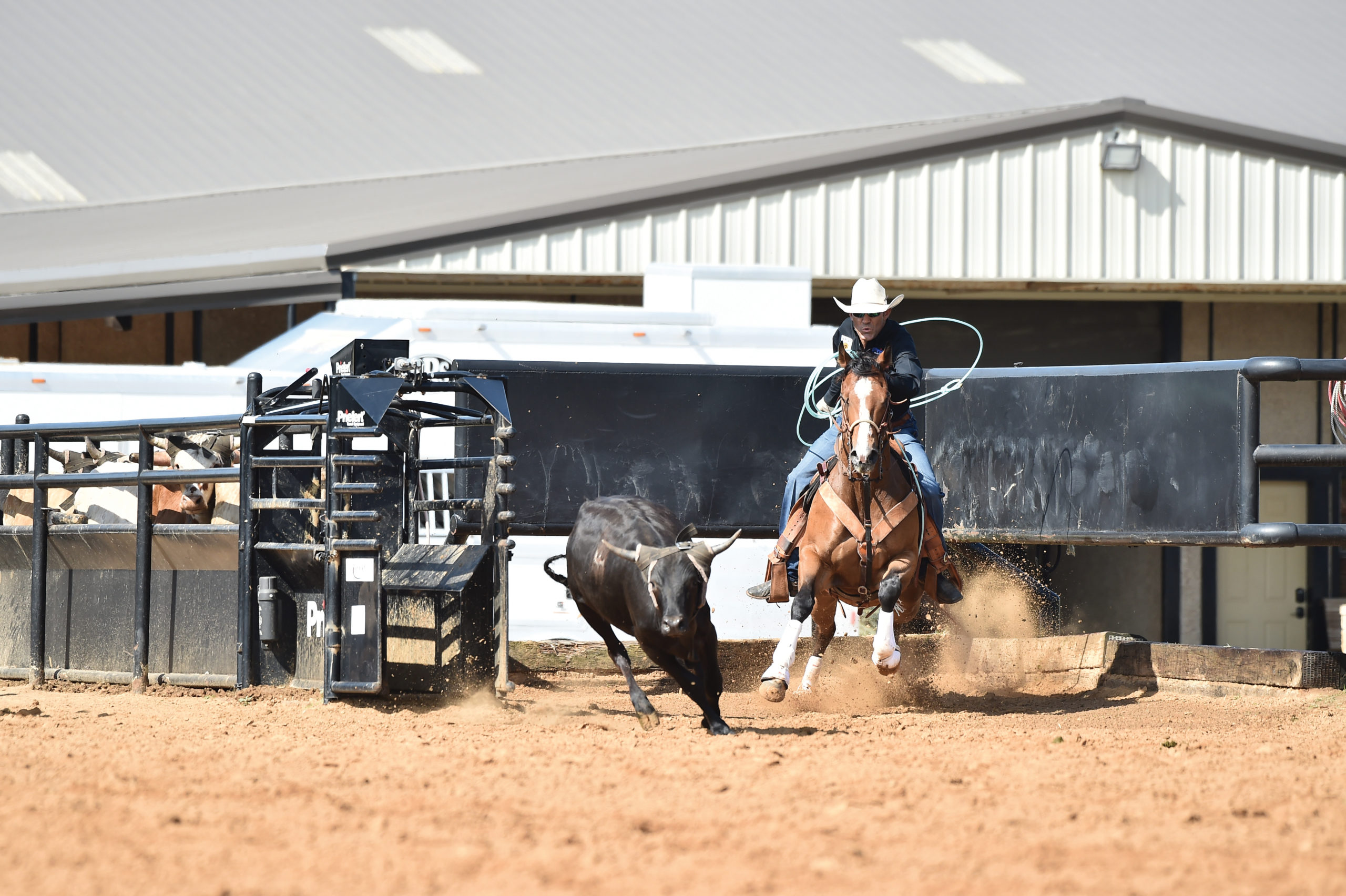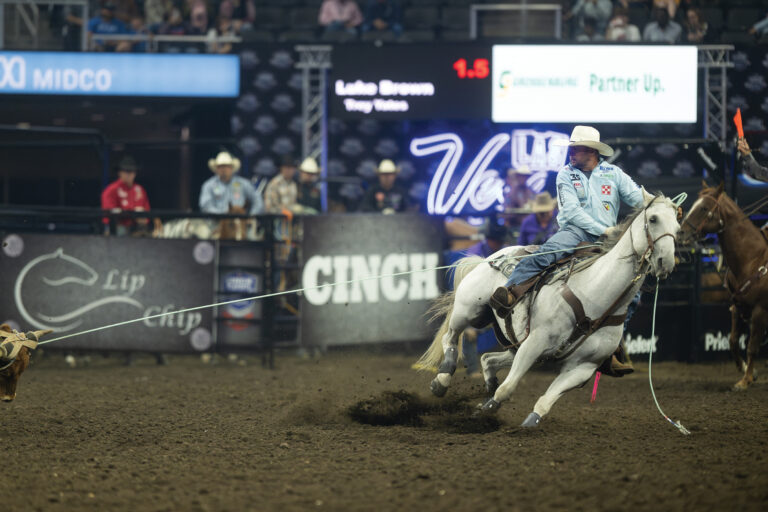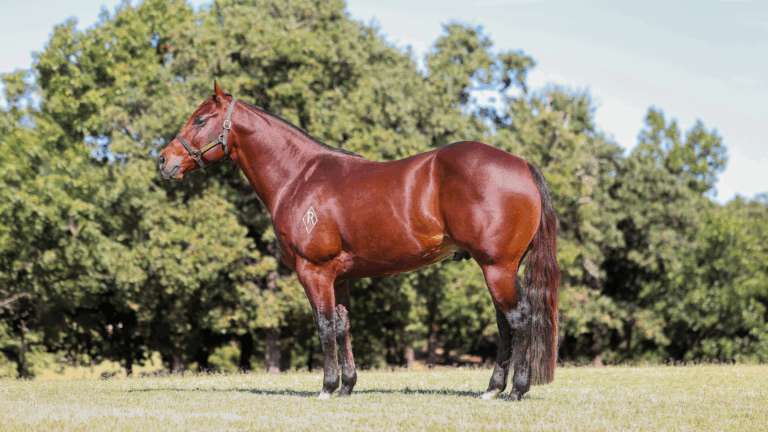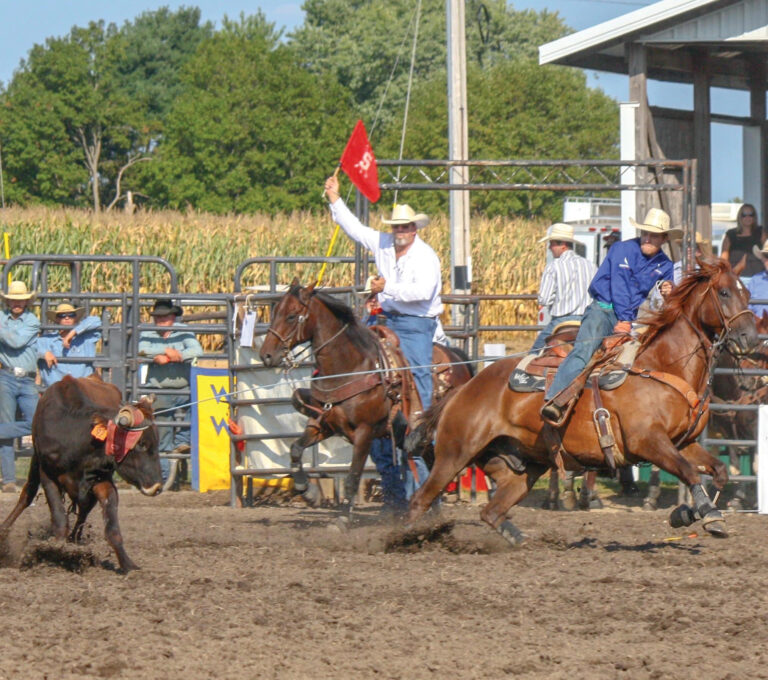Four-time World Champion Bareback Rider Bobby Mote will go down in rodeo history as one of the most dominant cowboys of all time in his trademark event. Mote now serves as president of the World Champions Rodeo Alliance and ranch manager of Reliance Ranches, which includes a horse, cattle and hay operation. When he’s not at his desk working on raising the rodeo bar, he can be found horseback, oftentimes with a rope in his hand. Oregon-native Mote and his wife, Kate, live in Llano, Texas, and have three children, Charlie, Laura and Trey.
Q: Reliance Ranches is based in both Llano, Texas, and Guthrie, Oklahoma, right down the road from the world-famous Lazy E Arena. Talk about the goals of this impressive horse operation, and what makes it special.
A: Reliance Ranches has a very successful Quarter Horse racing program. Reliance-raised horses have over $7 million in racing earnings. The Lazy E stands some of the most recognized Quarter Horse studs in the business. And what we’re finding is that these horses can not only run, but are also very versatile and make great performance horses.
Q: Tell us about your role in this family-owned horse business.
A: Once the horses have either aged out of racing or don’t make the cut to go further down that road, we look at their potential as performance horses. A lot of them have the conformation to be good rope and barrel horses. I work with their trainers to figure out which horses are best suited for what, then we proceed accordingly. They typically send me the horses that are riding good and gentle. I ride them on the ranch to move and check cows, and we brand on them. We also haul them around to a lot of high school and junior rodeos to expose them to everything. By the time I’ve had a horse for six or eight months, he’s done a lot of different things. We like them broke and versatile.
Q: Take us back to your bareback riding career, in which you qualified for 15 straight National Finals Rodeos from 2001-2015. For all you won in the end, you were not a natural, in the beginning, were you?
A: I just wasn’t good. I’m not a natural athlete. And through high school rodeo and amateur rodeo, I didn’t show any promise. The one thing I had going for me was that I tried hard. It took me years to be able to spur one every jump. It wasn’t anything pretty. I had some bad wrecks, and I got hurt all the time. I guess you could say I was a late bloomer.
Q: You’re also 6’ 1”. How did being on the tall side help or hurt your bareback riding and impact your style?
A: It only really hurt me on small horses, because I used my feet a lot to ride and on small horses there was nowhere to go with them. I struggled on small horses. But I never really had a comparison with what it would have been like to be shorter, because I was never a small bareback rider. I can say that I didn’t see being tall as a disadvantage. I actually always saw it as an advantage, because I was longer and had more to absorb all that shock. The last thing you want to come up during a jump is your head. So something’s got to give. And being longer and taller gives you more length to absorb that force. There are a lot of taller bareback riders now than there were a decade ago.
Q: One of your most impressive rodeo records is the one for the most go-round wins in the bareback riding at the NFR with 25. For as consistent as you were in your career—including winning the 2009 NFR average—that’s a lot of going for first.
A: When I got consistent was when I learned to focus only on the first jump. When I was at my best, the only thing I was concerned about was that first jump. When everything goes as planned at the start of a ride, you can start reacting on the second jump. It’s no different than scoring good in the team roping. The start sets up the run. When I realized that I just had to do my job on that first jump and was able to trust it, everything worked. It took me messing up in the 10th round at my first NFR in 2001 to learn that lesson. All I had to do was make the whistle to win the average, win the world, seal the Cinderella story and show everybody who was boss. But I got ahead of myself, and it got me bucked off. Because I was thinking about the whole ride, I got in my own way and made a mistake. Tough loss, but it taught me to focus on my job that first jump. In 2002, I had to win the 10th round to win the world. By then, I’d learned to focus on doing my job that first jump, so those big situations didn’t bother me anymore. I would have had a short career if I hadn’t figured that one little thing out.
Q: Not wearing yellow in the arena is one of the oldest rodeo superstitions, and yet you wore those yellow chaps with pride. Why was that?
A: Because I’m not superstitious. Why would yellow be unlucky? My whole career they said I was too this and not enough of that. The lesson in that is that it doesn’t matter what anybody else says. It’s what you think that counts. When I first tried those chaps on for a sponsor, I laughed and said I looked like Big Bird. But I first wore them at the Columbia River Circuit Finals, and cleaned house. So they kind of grew on me.
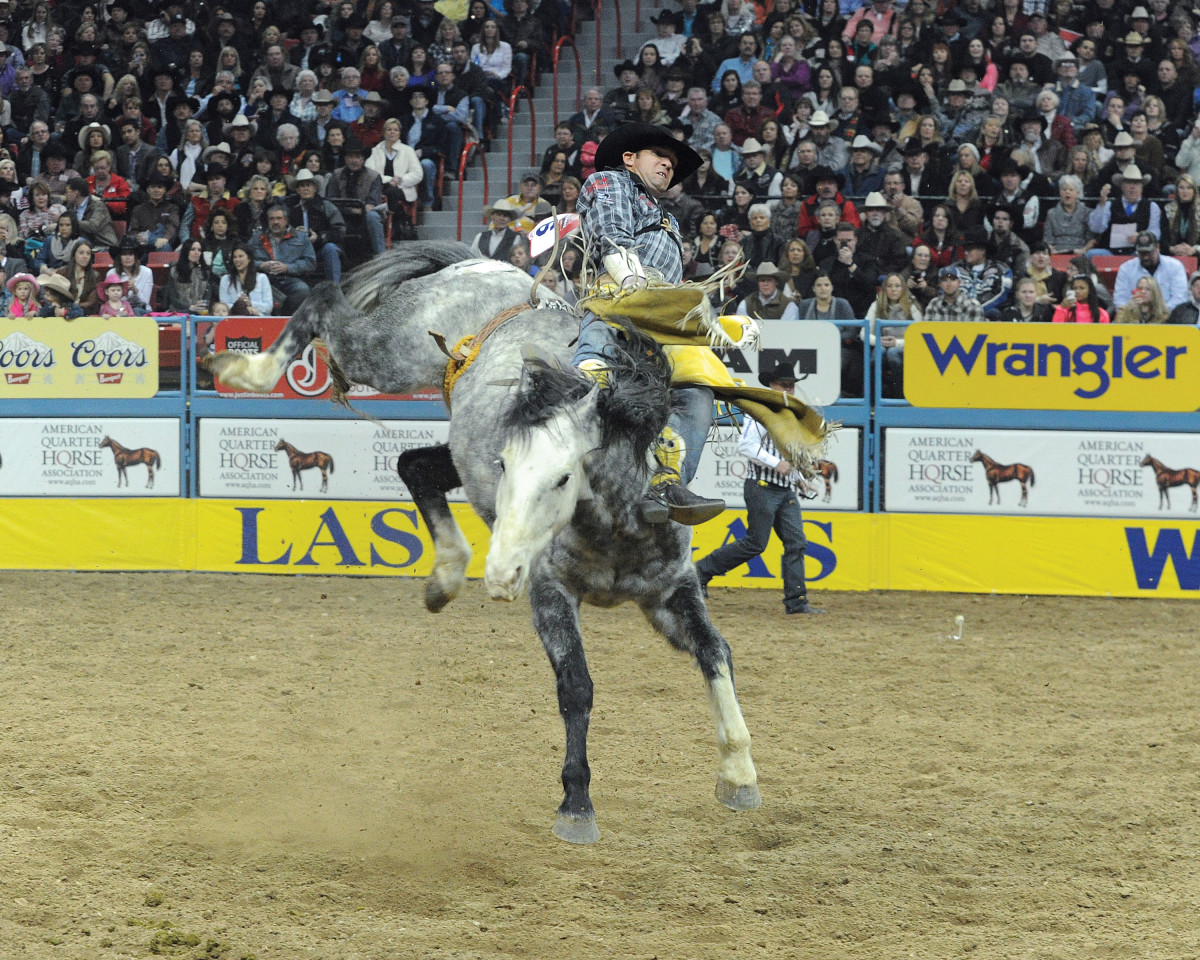
Dan Hubbell Photo
Q: You’re very diet and fitness conscious, aren’t you?
A: Food allergies make staying on a special diet mandatory. My primary allergies are dairy and gluten. I had a super weak immune system and blood sugar problems prior to finding out about my food allergies. As soon as I changed my diet, I got healthier and my immune system got stronger. You get addicted to feeling good, so that’s what makes you stay disciplined. Feeling like you got poisoned when you eat something you’re allergic to makes it easy to stick to a pretty strict diet. As far as staying in shape goes, I took a little break thinking it didn’t matter, but then my neck and back started hurting. I had rotator cuff surgery on my left arm last August from an old bareback riding injury. Since getting healed up from that, I like to jog. I also set up circuits in my gym in the shop, with the goal of keeping my heart rate up for 30-40 minutes.
Q: What year did you retire from riding bareback horses, and how soon afterwards did you start on the work you’re doing now?
A: The last place I rode was at the Finals at Houston in 2017. I was living in Stephenville, Texas, at the time, but drove from Houston to Llano and met with Gary (McKinney). He had some really nice horses, I went to work for him and it’s evolved from there.
Q: Tell people who aren’t familiar with the WCRA what it’s about, and why you’re so passionate about it.
A: We create several big open events throughout the year, and we allow anybody to qualify for those events through our technology platform (Rodeo Logistics). People nominate events they’re already going to to quality for our big events. To date, we’ve paid out $8.5 million to rodeo athletes—not just professional, household names, but anybody with the desire and ability to compete at that level. We recognize that there’s room for improvement in this industry, and we’re working hard to make a difference and make it better for everyone involved in the sport. We say we’re All for Rodeo, and we mean it. The only way rodeo is going to survive and grow is if we get more people doing it. This is one way to do that, and to also make it sustainable for everyone in rodeo.
Q: You’re obviously a very busy cowboy, on both the business side of the sport and time spent in the saddle. How much time do you have to rope on a regular basis?
A: In the summertime, I don’t plan any calls or meetings before noon. We’re in the saddle when the sun comes up, and we ride until it gets too hot. I eat lunch while I’m catching up on my emails, then spend the rest of the day at my desk. In the wintertime, it flips. I’m at my desk all morning, then we ride and rope in the afternoon. One of my neighbors that I rope with quite a bit is Rich Skelton.
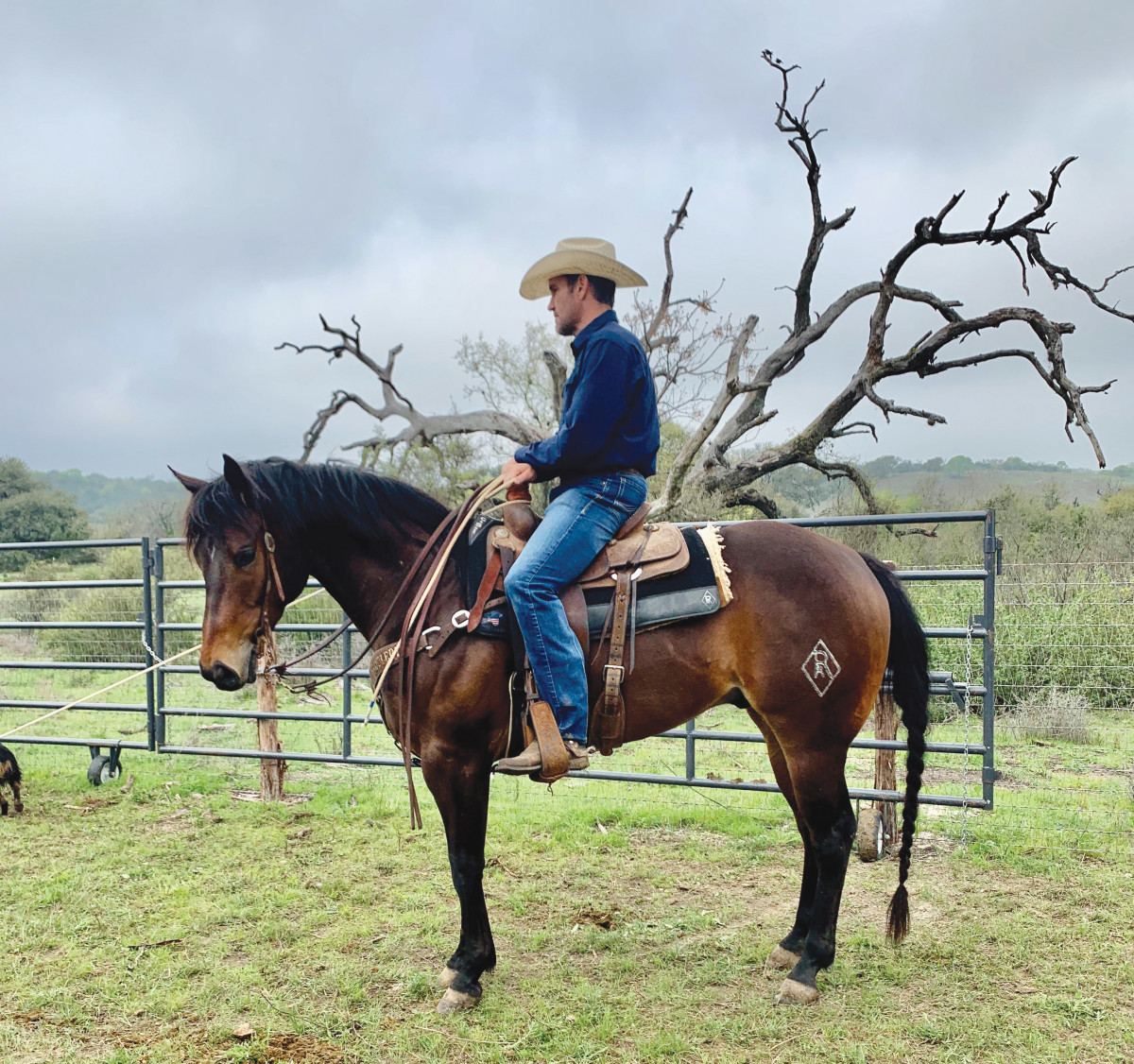
Mote family photo
Q: You’ve lived rodeo from every angle. In your perfect world, what would the cowboy sport look like for the next generation?
A: That’s a multi-layered question with a multi-layered answer. I’d like to see that there are enough people participating in the sport that rodeos at every level are full contestant-wise. I’d also like to see the pros competing at a schedule of 30-40 big events a year. There are too many sad stories in rodeo at the highest level by the end of some really successful careers. I would love to see these guys able to make a good living relative to how good they are and how much they commit themselves to their craft. And they don’t need to be on the road 200 days a year to do it. They should be able to make a good living and balance their families with their profession at the same time. Rodeo needs to be sustainable for athletes at all levels of the game in order for them to keep pursuing it, and that includes full-time professionals and circuit contestants.
Q: How has the tenacity you learned from rodeoing for a living helping in everything you do today?
A: Tenacity is the one quality that’s helped across every role in my life and with all the hats I’ve been fortunate enough to wear so far. I don’t give up. And the harder something is, the more apt I am to take it on. You can get a long way in any field by giving it everything you’ve got.




